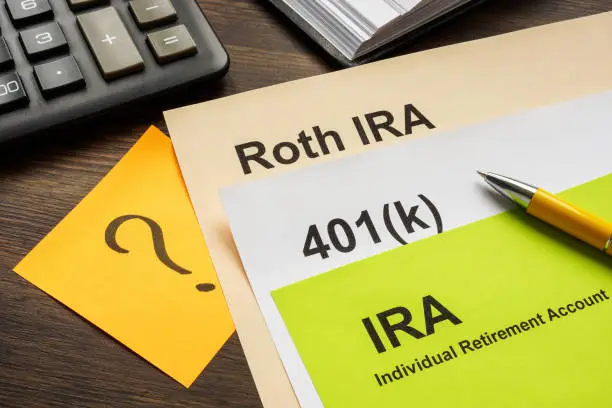One of the more challenging activities undertaken is retirement planning, considering many factors; however proper planning of a retirement savings plan thoughtfully can put all the different variables under control and enjoy those golden years of life without financial uncertainty.
Whether retirement planning is a first-timer or you are close to or already in retirement, it’s never too early-too late for an experience retired person, especially for a beginner, to start. Use this guide to walk through the steps of the straightforward process for building a retirement savings plan that is right for you and your goals and lifestyle.
Why Do You Need A Retirement Savings Plan
A retirement savings plan is only a financial road map, though, which would be helpful to prepare and be assured of having enough money for a comfortable life if you decide to retire. It doesn’t really just say saving money in a bank account; it’s actually strategic investing and managing assets in a way to grow your wealth over time.
It should be an advanced consideration based on the current financial condition, the amount of income you might require after retirement, inflation, cost of healthcare, and others which may pose risks. Here are other reasons why a retirement savings plan is needed:
- Retirement Savings Plan: Assurance of Financial Security. You will be able to pursue your lifestyle when you are not working if you have a retirement savings plan.
- It will bring comfort or peace of mind: With a plan, you won’t worry about tomorrow. And you will find easy to appreciate the years spent in retirement.
- Protection against Inflation: A good retirement plan has investments beating inflation such that your purchasing power will not decline as time goes by.
- Healthcare Cost: As much as healthcare would be one of the costliest expenses for anybody, it sure would be to you as you age. This means that retirement planning would ensure you had enough money for healthcare to stay out of savings.

Outline Your Retirement Goals
Most people start by writing down their goals for retirement. Some ask others for the following:
- What age do you plan to retire?
- What kind of lifestyle would you like in retirement? Is this a life that might include travel, hobbies, or country-living? Do you pay for a home, food, healthcare, and/or entertainment?
- How much income will that require?
- Let’s take an example. You want to retire at 65. You expect that it would take about $50,000 annually to live. Now, 20 years into retirement, you will need approximately $1 million, before any force of inflation, so you can maintain your standard of living.
- If your goals are very realistic, achieving what you should save and what type of investment you need to look for will be easy to guide you.

Determine Your Retirement Needs
It is all quite straightforward, so you can easily estimate your goals for retirement and how much you should save. This calculation can even include estimates for living costs in retirement based on inflation, longevity, and all other retirement income. And, after all, it’s pretty much a simple calculation of how much you’re likely to need in retirement:
- Estimate Your Annual Expenses: Write what you estimate you will need to spend in retirement. That would include shelter, utilities, food, transportation, health care, insurance and recreation. Suggestion: Base those on current annual costs adjusted from there for the differences you will make when retired, like downsizing to a small house or traveling much more.
- Accounts for inflation: Inflation runs the purchasing power of money down. At an average annual rate of 2-3%, you will compute your costs in the future. For example, today you spend $50,000 a year and retire is 20 years later. If there is an inflationary addition of 3%, then your annual retirement costs come out at about $90,000.
- Calculate Your Retirement Income: take into account the number of income streams you will have when you retire. You’ll have your Social Security; retirement pension if you have one; rental income; and perhaps even some kind of part-time work. Take that and go down to subtract from your estimated annual expense.
- Calculate Your Savings Goal: You estimated expenses and just estimated income. From here, you can now figure how much you will save by checking the difference. Or if you want to know an estimate of how much money you will generally need, you could use a retirement calculator.
Choose the Right Retirement Accounts
Perhaps, the best selection of retirement accounts would be very significant in maximizing your funds’ saving and minimization of taxes. Indeed, there are various types of retirement accounts that one can select. All of them are advantageous as well as tax-intensive:
1. 401(k) Plans
It is the employer-sponsored retirement account. Take a piece of your income before you have paid taxes on those income amounts. Tax applies only upon withdrawal at your retirement on your money from your 401(k) account. Most employers offer to match contribution, meaning in effect, they are giving you free money to add to your retirement savings.
Tip: Save enough in your 401(k) so that you can enjoy the employer match. This will, probably, be one of the easiest ways to save more for retirement without necessarily digging much out of your pocket in terms of cash.

2. Individual Retirement Accounts (IRAs)
IRAs are retirement accounts that individuals can set up independently. There are two main types of IRAs:
- Traditional IRA: Contributions are tax-deductible; money in the account grows tax-deferred. You pay income taxes on withdrawals when you retire.
- Roth IRA: You put money into the account with after-tax dollars, and withdraws in retirement are taxfree. So if you’ll be higher taxed in retirement, the Roth IRA is the appropriate choice.
- Bonus Tip: You can have a Traditional IRA and a Roth IRA for best tax planning customization. You can even contribute simultaneously into both accounts. You will also get access to both tax-free dollars and taxable dollars in retirement.
3. Health Savings Account (HSA)
If you have a high-deductible health insurance plan, you can make contributions to an HSA. Contributions to an HSA are made tax deductible; the federal income tax is not assessed upon the withdrawal of distributions for qualified medical expenses. These HSA’s can even be used as yet another way to save for retirement, since if you withdraw from the account after age 65, there is no penalty, and you pay ordinary income taxes, though.
Fact: According to Fidelity, a couple retiring in 2023 can expect to pay approximately $315,000 in health-related costs after retirement. Money you can use to pay for those expenses with an HSA.
Develop a Savings and Investment Strategy
And when one draws a retirement plan, they must also come up with a savings and investment plan on how much one needs to save. So let’s just go the maximum distance with what one saves without discomfort in relation to the risk. Here is how it is done:
1. Determine Your Savings Rate
Calculate the amount you need to save per month based on your retirement goals and the amount that you have in hand. Normally, you should save 15 percent of the earnings for retirement. The higher your later age the more you need to save to catch up.
Tip: Save automatically by contributing automatically to retirement accounts. Then there is at least a form of regularity; the desire to spend is also reduced.
2. Diversify Your Investments
This would be the secret of protecting the risks and retrieving your desired returns from investing. You can have a combination of asset classes-which are not only limited to stocks, bonds, and real estate-in proportions to form a balanced mix. Of course, your proper asset allocation would depend on your risk tolerance, investment horizon, and what you want to achieve for retirement.
For example, a very common diversification strategy when retirement is near would be to hold more in bonds as a percent of the portfolio. They are usually less risky than equities. Much younger investors with an investment horizon that is very long would probably even commit a higher percent of their funds to equities in hopes of a bigger rate of return.
3. Rebalance Your Portfolio Regularly
Rebalancing of your portfolio is just when you make your investments in a way so it will be as close as possible to your target allocation of various assets. But with time, market swings could force your portfolio to get imbalanced, thereby increasing unnecessary exposure to risk.
Action Step: Periodically, but at least once a year, review your portfolio and rebalance accordingly. Rebalancing rebalances your investment strategy so that it stays in line with your retirement goals.
4. Keep Your Costs Low by Investing with a Low-Cost Broker
These will be investment fees that can siphon off your profits on an ongoing basis. Some of the no-fee investment products are index funds and exchange-traded funds, or ETFs which expose investors to markets widely for much less than funds hiring managers to actively invest on their behalf.
Facts: “if you knock a single percent off your investment fees per year, it will balloon your retirement savings by over 25 percent after 30 years,” a Vanguard study says.

Watch It, Change It
Isn’t that a one-time deal? Well, sorry to say that sometimes you might have to watch it and change it a little if your finances or goals change. Here’s how you can keep it going:
1. Review Your Retirement Plan Annually
Sometimes, review your retirement savings plan. You must cross-check and see the account balances, view investment performance, and see how your savings rate has been. Later on, you can change it with some modification concerning contribution or your strategy as needed.
Tip: Retirement planners, who also give you calculators, can enable you to monitor your progress and whether you are meeting your retirement objectives.
2. Stay Informed About Changes in Tax Laws and Retirement Accounts
These retirement accounts as well as the tax laws continue changing now and then and requires keeping vigilant enough so that you can keep abreast of such changes so you know how to take the maximum tax benefits and avoid penalties.
For instance, due to the SECURE Act, it raised the age at which a person would be compelled to withdraw Required Minimum Distributions from 70½ to 72 starting from 2019. In case there are such laws, you will know in good time and plan your withdrawal with them in mind.
3. Adapt to Life Changes
Another thing that may show up as a loser in your retirement savings plan could maybe be connected with some change, such as getting married, becoming a parent, changing jobs, or an unexpected medical expense. Brace yourself and prepare for a shift in the plan as implied by some of the changes you are likely to experience.
Action Step: Update every few years, based on major life experiences, such as the birth or adoption of a child, marriage, divorce, illness, or some other experience that may compromise future retirement ability, sometimes update retirement goals and savings plan to include your long-term objectives in updating your contribution and/or investment plan.
Plan for Healthcare and Long-Term Care
Major retirement costs are likely to be health care and long-term care costs. They hence are an integral part of a holistic retirement saving plan.
1. Estimate Healthcare Costs in Retirement
Consider what medical care will cost you-from Medicare premiums to out-of-pocket costs to prescription drugs. Tools are available so you can come up with estimates of these costs using Fidelity’s Retiree Health Care Cost Estimate to fit them into your budget.
2. Consider Long-Term Care Insurance
Long-term care insurance can be included as a portion of your financial planning as such insurance pays for nursing-home, assisted-living facility, or in-home care. Consider long-term care insurance verses the health of you and your family members and your financial situation.
Fact: The U.S. Department of Health and Human Services projects that about 70 percent of today’s elderly will eventually require some form of long-term care services sometime during their lives.
How These Insights Were Developed
This works because this is our education by having worked with thousands of people in putting retirement plans together. In this way, a retirement savings plan becomes the cue for putting one’s mind at ease while securing a good financial future.
We took all that real-life experience, combined with the relentless tidal wave of new research and industry best practices, to create this guide for you to help give you practical advice that will suit your needs.
The book indeed helps you out with those very practical steps toward taking control over your retirement planning-whatever the stage you stand at currently.
Conclusion
Probably one of the earliest concepts that flashes into their minds when they think of growing old is a retirement savings plan to secure their financial future and realize peace of mind. You need to determine your goals, estimate your needs, choose appropriate retirement accounts, design a saving and investing plan, and keep checking your progress.
One must not forget, of course, that the earlier one does some planning for retirement, the better one starts late. And last, never forget that indeed it is never too late or too early to start planning for retirement, taking control of your financial future, and knowing you are ready for whatever life has in store for you.


Leave a Reply